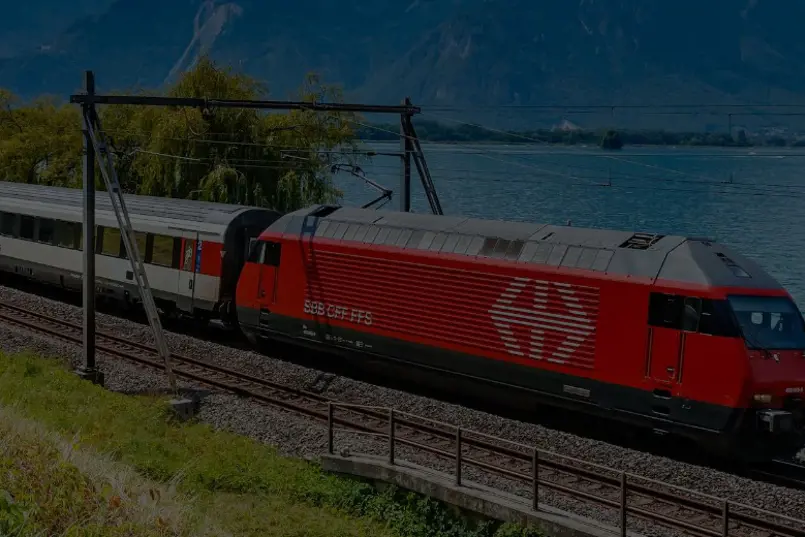What is SBB doing to save energy?
SBB aims to save 850 gigawatt hours of electricity by 2030, which corresponds to around 30 percent of its total energy requirement

Rail transport is sustainable per se, as it requires significantly less energy and space than road transport.
In addition, it emits much less CO2. With a share of 5% of the energy consumption of land transport,
rail accounts for 16% of passenger transport and 37% of freight transport in Switzerland.
Traction current accounts for the largest share of SBB's energy consumption (75%). Thus, there is also
the greatest savings potential in this area. SBB trains already run on 90% from hydropower. The remaining 10%
is nuclear power. In a few years, traction current is expected to come entirely from renewable sources.
In recent years, SBB has implemented more than 250 different measures to save energy. For example,
the energy saved in 2022 – namely around 530 GWh – would have been sufficient to supply all households
in the cities of Bern and Lausanne with electricity together.
SBBs’ energy-saving projects cover the following areas:
-
The "Adaptive Steering" (ADL) system continuously calculates a travel forecast for all trains in Switzerland.
In the event of an imminent stop, train drivers are notified ahead of time with ADL – thus preventing unnecessary
stops and energy-intensive start-ups. -
In 2020, the vPRO feature was introduced to complement ADL. Shortly before departure, the drivers of passenger trains
receive the optimised driving profile based on the daily updated information on rolling stock, construction sites and routes. -
Since spring 2023, a punctuality display has shown train drivers the deviation from the operational timetable to the second for
each main signal. This enables the locomotive crew to optimally adapt the driving style to the current traffic situation and
prevents energy-intensive acceleration. -
Gotthard Base Tunnel: At night, when there are no passenger trains, freight trains can travel through the tunnel more slowly
and thus more energy-efficiently. Air resistance drops sharply at lower speeds. -
At the beginning of 2021, SBB owned around 700 diesel-powered rail vehicles, which it uses for maintenance work, on construction
sites, for last-mile freight transport, for shunting and for firefighting and rescue operations. The goal is to reduce the consumption
of fossil fuels by 2030 by 50% and by 2040 by 92%. To this end, SBB is relying primarily on electric drive for its rail vehicles for
replacement and new procurements. -
Equipping the locomotives with energy measurement systems. This makes it possible to measure the effective power
consumption of a train.
Optimal buildings and facilities
In addition to traditional rail production, SBB operates countless buildings and workshops that require a lot of energy to operate.
To save electricity, SBB illuminates some marshalling yards with LED lamps, renews the insulation and windows of old buildings
and optimises heating and air conditioning systems. The photovoltaic system in Zurich Seebach is also interesting: Since the solar
power is fed directly into the rail network and does not have to be converted first, SBB saves a considerable amount of electricity.
The service facility in Muttenz has also been equipped with photovoltaics since 2016 and has since supplied 10% of the site's electricity.
The 7400-point heaters do not run continuously but are switched on and off based on the weather. In this way, SBB saves around 7 GWh of energy
per year. In addition, the existing gas point heaters will be converted to electric operation by 2040.
When the trains are asleep...

Today, virtually all SBB passenger trains have a snooze mode: if there are no passengers in the vehicle, the train is allowed to slumber,
and the heating is switched off. Furthermore, thanks to additional programming in the headquarters and on the vehicles, the car heaters of some
SBB trains are linked to the daily timetable. As a result, each vehicle knows when its next mission is and heats up autonomously at the desired time.
In this way, SBB saves 12 GWh of energy annually without sacrificing comfort for customers.
Source: Saving energy: What is SBB doing? - SBB Cargo Blog